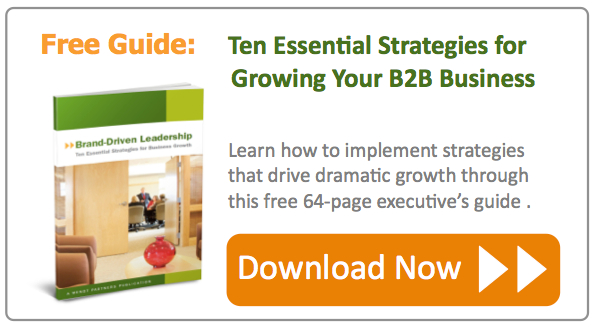Doug Wendt is a co-founder and senior partner with Wendt Partners.
1. Repackage Existing Products and Services to Sharpen Your Competitive Edge
When’s the last time you really looked at the marketplace with fresh eyes? When you truly called upon the ‘voice of the customer’ to learn what they are thinking? Chances are, it’s been a while.
 Sometimes, very small changes can lead to major results. For example, Marriott hotels polled business customers and found out that one thing they truly despise is paying for WiFi. Even if a corporate executive on an expense account is staying at a super-premium property in the middle of midtown Manhattan, the irritation of having to sign up for and pay subscription fees to access the internet today drives businesspeople crazy.
Sometimes, very small changes can lead to major results. For example, Marriott hotels polled business customers and found out that one thing they truly despise is paying for WiFi. Even if a corporate executive on an expense account is staying at a super-premium property in the middle of midtown Manhattan, the irritation of having to sign up for and pay subscription fees to access the internet today drives businesspeople crazy.
So, Marriott decided to get rid of the WiFi fees for their public areas altogether… but they didn’t just stop there. They repackaged this decision as a new service offering and encouraged local companies to hold informal meetings or working sessions in the lobbies of Marriott hotels. The result? Food and beverage revenues went way up, far outpacing the lost revenue from dropping the WiFi fees.
Maybe it’s time for you to check in with your customers and evaluate your competitors again, to determine how you can make a small change here and a minor tweak there… and reap the rewards from new bursts of revenue.
2. Use Marketing Automation and Digital Intelligence to Gain Insider Insight
Marketing automation technologies allow companies to manage online content, inbound marketing, lead generation, email marketing, social media and more through an integrated approach. This is far more meaningful than just providing a centralized toolbox from which to manage a disparate range of tasks.
Rather, the real value of marketing automation is in the intelligence and insight your team will gain by seeing how prospect behavior responds to your efforts. Which prospects clicked through your trade show follow-up email? What sizes of companies are most responsive to your latest blog content? How did your most recent landing page A-B test reveal the strongest buying patterns? This information, coupled with a commitment to aggressively building your library of market-facing educational content, can become the most powerful lead generation and qualifying tools you’ve ever had.
3. Engage Customers and Partners in Content Marketing
Since content marketing is primarily about creating content elements (white papers, case studies, educational guides, eBooks, articles, videos and infographics among them) that will motivate, educate and engage prospects, one of the best ways to do this is to embrace the knowledge and ideas in the minds of your customers and partners.
One of the most successful software companies in Canada leveraged this idea to capture video interviews of every one of its clients, creating an enormously powerful media library of clients talking directly to prospects about the advantages of this firm. Boston-based Hubspot, a leading marketing automation company, took a similar approach by creating an entire Inbound Insider blog on its website that consists of contributed articles and content from its agency partners. You can do the same and, in the process, solidify greater loyalty from your channel and customer communities.
4. Pilot Social Selling and Build a Network Sales Model
Traditional selling – consisting of techniques such as direct-mail lead generation, outbound cold-calling and target account selling are not dead. However, what we do not is that they are far less effective today than they were in the past. Prospects are busier, budgets are tighter and sales cycles are harder to manage and forecast.
That’s why this is an ideal time to start your sales team down the road of building new relationships and leveraging existing ones through social selling techniques involving social media, LinkedIn relationships, better mapping of prospect and customer networks, and more aggressive use of market intelligence to focus your sales team’s time and effort on the best opportunities.
How a Business Growth Consultant Can Help
Each of these examples showcases a serious opportunity for you to gain new revenue from a relatively modest investment or cultural change. But you still have to take the right steps and commit to the new direction. That’s where a B2B business growth consultant can help. As an expert in assessing the marketplace, crafting new strategies and implementing successful new directions, a business growth consultant can advise you as CEO and lead your company toward success.
Are you ready to learn more about how you can develop new strategies to fuel growth in your company? Download our free 64-page guide to B2B business growth:
Image Credit: Flickr (Creative Commons)







